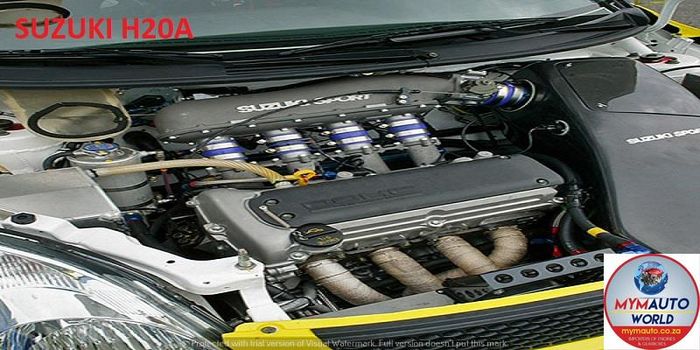Opel Corsa Engine: Everything You Required to Know Before Buying
Opel Corsa Engine: Everything You Required to Know Before Buying
Blog Article
Discovering the Inner Operation of a Compact Automobile's Engine System
As drivers, we usually consider granted the elaborate processes that take place within the confines of our vehicle's engine system. The portable yet complicated machinery that drives us onward is a marvel of design precision and coordination. From the regulated explosions in the burning chamber to the precise timing of fuel injection, every element plays an important function in the smooth procedure of the engine. In this expedition of a compact automobile's engine system, we will certainly unravel the internal workings of this mechanical harmony, clarifying the secrets that drive us forward on our everyday journeys.
Burning Refine Summary
The burning procedure in a compact automobile's engine system is a vital device that efficiently transforms gas into energy to power the car. This procedure occurs within the combustion chamber of the engine, where fuel and air mix, stir up, and generate controlled surges. The burning process is composed of 4 major stages: consumption, compression, exhaust, and power.
Throughout the intake stage, the piston relocates downward, attracting in a mix of air and fuel right into the burning chamber. This descending activity produces the power required to drive the car. This cyclic combustion process is essential to the procedure of a small vehicle's engine system, ensuring reliable energy conversion for propulsion.
Piston and Cylinder Communication

The piston's exact fit within the cylinder is crucial for maintaining optimal compression and stopping power loss throughout burning. Tight clearances in between the piston and cyndrical tube wall surfaces ensure reliable securing, allowing the piston to move efficiently without permitting gases to leakage past. Correct lubrication is additionally crucial to lower rubbing and put on in between these elements, improving durability and performance.
Additionally, the design and materials utilized in manufacturing the piston and cylinder influence engine performance and resilience. Modern engines frequently employ light-weight yet sturdy products like light weight aluminum alloys for pistons and cylinder liners to lower inertia and improve thermal effectiveness. In general, the harmonious communication between the piston and cylinder is basic to the engine's capability and general performance.
Gas Injection System Functionality
Gas injection systems in compact lorry engines play an essential function in precisely supplying fuel to the burning chamber for regulated and effective ignition. The gas injection system functions by infusing fuel right into the combustion chamber at the optimum moment during the engine's procedure (opel corsa engine). This precise timing makes certain that the fuel blends uniformly with the air for proper burning, leading to boosted fuel performance and minimized emissions
There are primarily 2 kinds of fuel try this out shot systems used in small lorry engines: port fuel shot (PFI) and straight fuel shot (DFI) PFI systems inject gas into the intake port prior to the intake shutoff, while DFI systems inject gas directly right into the combustion chamber. Both systems have their advantages, with DFI providing far better fuel atomization and PFI giving a more cost-efficient service.
Recognizing Engine Cooling Devices
Efficient procedure of a small car's engine depends greatly on the effectiveness of its cooling systems. Engine air conditioning is vital to avoid getting too hot, which can bring about significant damage and reduced performance. The cooling system in a portable vehicle usually includes a number of components collaborating to control the engine temperature level. One crucial part is the radiator, which uses coolant to take in warmth from the engine. As the warm coolant moves via the radiator, it launches warmth right into the straight from the source air, cooling down before returning to the engine. The water pump circulates the coolant with the engine and radiator, ensuring a consistent flow to regulate temperature level. In addition, the thermostat aids regulate the coolant circulation to keep optimum engine temperature level. Some vehicles also have cooling down followers that turn on when added air conditioning is needed, such as during heavy traffic or heat. Understanding these engine cooling mechanisms is vital for keeping the efficiency and long life of a portable lorry's engine system.

Exhaust System Components Explained
The optimal performance of a small car's engine cooling devices depends upon a complementary system called the exhaust system, which makes up different crucial components for making sure effective emissions and engine efficiency. The exhaust system includes parts such as the exhaust manifold, catalytic converter, muffler, and tailpipe. The exhaust manifold accumulates exhaust gases from the engine's courses and cyndrical tubes them to the catalytic converter. The catalytic converter after that converts hazardous contaminants in the exhaust into much less unsafe discharges prior to releasing them via the muffler and tailpipe.
One crucial element of the exhaust system is the oxygen sensing unit, which keeps an eye on the oxygen levels in the exhaust gases to aid manage gas intake and make certain optimal engine performance. opel corsa engine. Additionally, the resonator might be existing in some exhaust systems to reduce sound levels. Overall, the exhaust system plays an important function in keeping engine effectiveness, minimizing dangerous discharges, and ensuring a quieter driving experience for portable vehicle proprietors

Verdict
In final thought, the portable car's engine system is a complex mix of parts that function with each other to promote the burning process, convert gas into energy, and get rid of waste gases. Recognizing the inner workings of the engine system, consisting of the piston and cylinder interaction, fuel shot system, engine cooling mechanisms, and exhaust system components, is crucial for keeping ideal performance and performance of the lorry.
The combustion process in a portable car's engine system is a critical device that effectively transforms gas into energy to power the car.Fuel shot systems in compact automobile engines play a crucial function in exactly providing gas to the burning chamber for efficient and regulated ignition.There are largely 2 kinds of fuel injection systems used in portable lorry engines: port fuel shot article source (PFI) and straight gas shot (DFI) Recognizing these engine air conditioning mechanisms is essential for preserving the efficiency and longevity of a portable automobile's engine system.
The optimal functioning of a small automobile's engine air conditioning systems depends on a complementary system known as the exhaust system, which makes up different vital components for guaranteeing efficient discharges and engine performance.
Report this page